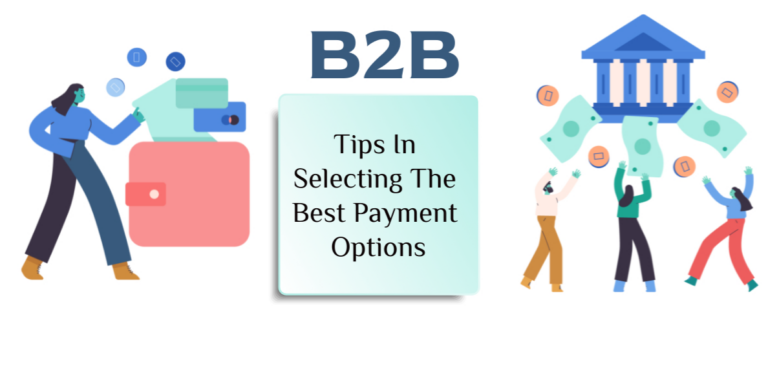Everything You Need To Prepare When Starting An Online Retail Business
Understanding Online Retail Business
An online retail business leverages the power of the internet to sell a wide array of products directly to consumers. This platform eliminates the need for a physical shop, allowing businesses to serve customers wherever they’re located, while also significantly reducing overhead costs. A prime example is Amazon, selling items ranging from books to household products, and even offering services like video streaming.
The online retail business model includes:
- Purchasing products from manufacturers or wholesalers.
- Setting up an intuitive, user-friendly website or utilizing existing e-commerce platforms like Etsy or eBay.
- Implementing a reliable delivery system or opting for dropshipping services.
- Incorporating effective marketing strategies to attract customers.
- Utilizing data analytics tools to evaluate customer behavior, improve services, and optimize pricing.
If executed well, an online retail business offers enormous opportunities to entrepreneurs, even with lean initial investments. Remember, staying competitive in this cut-throat digital marketplace requires innovation, unique product offerings, and exceptional customer service.

What are the advantages of having an online retail business?
The first significant advantage of having an online retail business is its wide-reaching customer potential. E-commerce doesn’t adhere to traditional high street hours; it grants retailers the opportunity to showcase their products in a 24/7 global marketplace. This advantage was particularly clear during the recent pandemic when online deliveries from brands like Ocado and Morrisons saw a rapid increase in orders. Additionally, being online means being able to cater to an international customer base, vastly extending the potential market beyond a physical store’s geographically limited catchment area.
Secondly, operating an online retail business is often much more cost effective than maintaining a brick-and-mortar storefront. Traditional street stores have suffered due to rising overheads, with many small businesses facing evictions in recent years. On the flip side, the overhead costs of an online business tend to be much lower, and operational expenses can be carefully controlled. Besides the financial factor, online retailing allows for a seamless omnichannel service experience, with customer queries easily managed via email, live chat, chatbots, and online forms. Online retailers can also maintain efficient contact with their warehouses, suppliers, and shippers, enhancing operational efficiency.
Steps to Start an Online Retail Business
Step 1: Decide on your business idea.

Discovering the perfect business idea for your online retail venture can feel daunting. But, with a systematic approach and a little bit of innovation, you could be on your way to crafting an idea you’re passionate about. Start with identifying your interests and passions. There’s an inherent motivation in selling what you love. Foresee potential challenges in your chosen niche. Every industry has hiccups. Anticipating them beforehand ensures a smoother journey.
Step 2: Research and define your positioning.
Identify your niche: Understand the specific part of the market you want to appeal to with your offerings. It could be high-end fashion, organic groceries, or anything else that aligns with your passion and expertise. It’s about carving out a position that resonates with your target audience and distinguishes you from the competition. Be unique, be consistent, be you!
Step 3: Calculate and invest in startup costs.
Understanding startup costs is essential when launching an online retail business. It shapes your budget and bolsters successful operation strategies. Here’s a simple yet strategic guide:
- Draft a Business Plan: Lay the groundwork for your potential expenses and income. Insight into your costs will shape your decision-making process.
- Evaluate Employee Costs: Think about hiring for primary operations. Don’t forget about salaries, benefits, training, and payroll.
- Assess Space Requirements: Physical retail space may not be your concern, but you will need digital space like storage for an eCommerce platform.
- Consider Marketing Costs: Craft your brand’s image, design a user-friendly website, design logos, and plan campaigns.
- Keep your scope realistic, but remember to expand and recalibrate your budget as your retail business grows.
Step 4: Develop a business plan that outlines milestones and objectives.
- Start with an “Executive Summary”: Outline your business’ purpose, mission, and strategies for achieving goals.
- Develop a “Product Line”: Describe what you’ll be selling and why it’s needed in the market.
- Draft “Business Description”: Include details about your company, the problem it solves, and your solution. Increasing clarity helps solidify the business structure.
- Conduct “Market Analysis”: Assess the industry landscape, market opportunities, target customers, and competitors.
- Define “Organizational Structure”: Present roles of key team members and hiring plans.
- Plan “Marketing and Sales”: Illustrate methods to attract and retain customers, such as social media marketing.
- Project “Financials”: Predict financial stability over the next 5 years.
- Discuss “Funding Requests”: If required, detail how you will secure and utilize business loans.
Remember to keep your business plan informative yet concise. Update it as your business evolves.

Step 5: Create a brand identity and define your customer service strategy.
Begin with defining your brand positioning. Think about what makes your business unique and how you want to be perceived. A powerful brand and excellent service can set your online retail business on the path to success.
- Identify your target audience. Remember, your branding should reflect the preferences and needs of your audience.
- Craft a compelling mission statement that encapsulates your business’s values and goals.
- Ensure consistency in your branding and customer service approach across your website, social channels, and even in email communications.
- Finally, arm yourself with a robust retail marketing strategy, which will help disseminate your brand and attract your audience.
Step 6: Identify the location that is right for you.
The location of your offline retail store is undeniably pivotal to your business’s success, drawing in customers or potentially putting them off. This aspect is equally crucial for online retail, influencing visibility, market reach, and likely profitability.
- Begin by identifying your target audience. This influences where your advertising should be most visible and where your potential buyers are online. This could be anywhere from Amazon to Etsy or your own e-commerce website.
- Examine the competition. Just as in a physical neighborhood, observe the online ‘surroundings.’ If there are too many competitors on your chosen platform, you may consider another place or differentiate your store distinctly.
- Factor in your requirements. If you need customized branding, for instance, you might opt for a platform like Shopify that offers a personalized online ‘storefront.’
- Consider a ‘bricks and clicks’ model. Combining online and offline retail can sometimes yield the best results, enabling you to tap into multiple customer bases.

Step 7: Make sure that you understand other retail business laws before starting your business.
A solid understanding of the applicable business laws is equally important. From determining your tax liability to understanding and meeting your tax obligations, you need to be well-versed in all aspects of tax law. Next are labor laws. If you plan on employing individuals, you need to understand your obligations as an employer under state and federal labor laws.
Another key area is licensing. You’ll need to secure the necessary retail business permits and papers. Also essential is advertising law. Being familiar with what is acceptable and what’s not will save you legal trouble. Lastly, ensure you have your business insurance in place to safeguard against unexpected risks.
Step 8: Select the right legal structure for your business.
- Start with understanding the different legal structures recognized by the Internal Revenue Service: Sole Proprietorship, Corporation (C Corp), S Corporation (S Corp), Partnership (LP and LLP), and Limited Liability Corporation (LLC).
- Evaluate the pros and cons of each structure, considering your business needs, future growth plans, and legal requirements.
- Consult with a business attorney to gain a clearer understanding and to ensure compliance with legal obligations.
- Once you’ve chosen a fitting structure, make it official by securing the necessary licenses and permits, like a basic business operation license and an Employer Identification Number (EIN).
Step 9: Create store policies and procedures.
- Frame your business-customer policies: Start with outlining your return and exchange policies or pet allowances, making shopping stress-free for your customers. Expert tip: A 100% satisfaction guarantee enhances customer loyalty.
- Establish business-employee procedures: Define details like dress codes or scheduling expectations, ensuring everyone cogs the company wheel smoothly.
- Train your team to resolve customer complaints or refunds professionally and promptly, adding that delicious touch of proactive customer service.
- Spice up customer experience with a loyalty program. Share discount codes, sales info, or the latest product details – the newsiest sprinkle on your retail business cake!
Step 10: Recruit a team of employees who are just as passionate about the brand as you are.
As a seasoned entrepreneur or a hopeful startup founder (that’s you), know that one of the greatest secrets to building a successful online retail business is not just about the products, but the people behind them. If I may share from experience in the retail industry, operational success, customer loyalty, and reputational growth are largely hinged on a passionate and customer-focused team.
Tips for Running a Successful Online Retail Business
1. Understand Your Target Market
Running a successful online retail business is not just about offering great products. It is also about understanding your target market and aligning your strategies to their needs and preferences. Delve deeper and define the type of consumer who would be interested in your products. This helps in creating comprehensive buyer personas, leading to a robust customer base.
2. Create a Targeted Brand Identity
Building a targeted brand identity is a game-changer for any successful online retail business. It crafts an unforgettable impression, setting your business apart from the pack.
3. Invest in Quality Web Design and Development
Investing in quality web design for your online retail business is no longer a luxury but a necessity. Top-tier website design can make the difference between ‘adding to cart’ and ‘abandon browsing’.
4. Develop a Strategic E-Commerce Marketing Strategy
As an expert in e-commerce strategy, I can’t stress enough how crucial a well-planned marketing strategy is for your online retail success. You, as a business owner, need to craft a strategy that not only grabs attention but also converts leads into customers.

5. Invest in Customer Satisfaction
Customer satisfaction holds a pivotal role in online retail, as happy customers breed success. They drive 77% of recommendations, turning into a valuable free marketing resource.
6. Hire Competent Staff
Like the wheels of a cart, competent staff is key to a successful online retail business. They can consolidate customer loyalty, boost sales, and reinforce your reputation.
Takeaway Tips:
- Hire for attitude even over experience when necessary.
- Understand your hiring legalities per your state.
- Onboard new hires properly, ensuring they are proficient in necessary tools and tech, especially your POS system.
7. Adopt E-Commerce Payment Systems
Adopting e-commerce payment systems is vital for running a successful online retail business as it enables seamless transactions and reaches broader customer bases. Heightened competition and evolving consumer behaviors necessitate an efficient, secure, and flexible payment system.

8. Develop a Stock-Keeping Unit (SKU) System
An SKU system is an essential tool for managing your online retail business inventory. It’s a unique combination of letters and numbers assigned to each product that aids in identifying and organizing your merchandise based on attributes like color, size, and brand.
9. Establish a Loyalty Program
Boosting customer loyalty is the heart of a thriving online retail business. A tried and true way is by creating a customer loyalty program, that not only rewards repeat purchases but fosters a deeper connection with your brand.
10. Monitor and Analyze Data Regularly
Navigating the e-commerce landscape necessitates regular monitoring and data analysis. This enables online retailers to spot trends, streamline operations, and improve customer experience.

Challenges in Online Retail Business and How to Overcome Them
Starting an online retail business can be daunting, with challenges ranging from finding the right platform to building a user-friendly website. Fear not, with strategic planning and diligent steps, any hurdle can be overcome.
- Platform Choice: Select an e-commerce platform that aligns with your business needs. Whether it’s a large-scale operation or a smaller boutique store, the platform should cater to your requirements.
- User-friendly Website: Design your website with customers’ user experience in mind. Simplify navigation and checkout processes to enhance customer satisfaction and decrease cart abandonment.
- Inventory Management: Effective inventory management is critical. Implement a robust system for tracking products, managing back-orders, and rearranging stock.
- Gaining Visibility: Invest in a solid digital marketing strategy. Emphasize SEO, targeted ads, and social media promotion for better online visibility.
- Navigating Shipping & Logistics: Choose the most efficient and cost-effective shipping options.
As suggested by experts, complement these steps with a strong team and a customer-first approach for a successful digital retail journey.
Conclusion
In conclusion, starting an online retail business can be an exciting adventure. It’s important to focus on a specific niche that you’re passionate about and know well. Aim to create a memorable brand that stands out from the crowd.
In today’s world, building a user-friendly website is not optional, it’s essential. Marketing strategies, both online and offline, can help elevate your brand visibility. And exceptional customer service can turn first-time customers into repeat ones.
Remember, the world of online retail is vast and diverse, so there’s room for everyone, and that includes you. Your dedication and hard work can create a thriving e-commerce business. Take the plunge into the world of online retail and let your entrepreneurial dreams take flight!
- E-Commerce Testing: The Ultimate Guide to Testing E-Commerce Websites - June 19, 2022
- Everything You Need To Prepare When Starting An Online Retail Business - January 30, 2022
- A Guide To Buying an Online Business: Tips For Beginners - October 7, 2021







